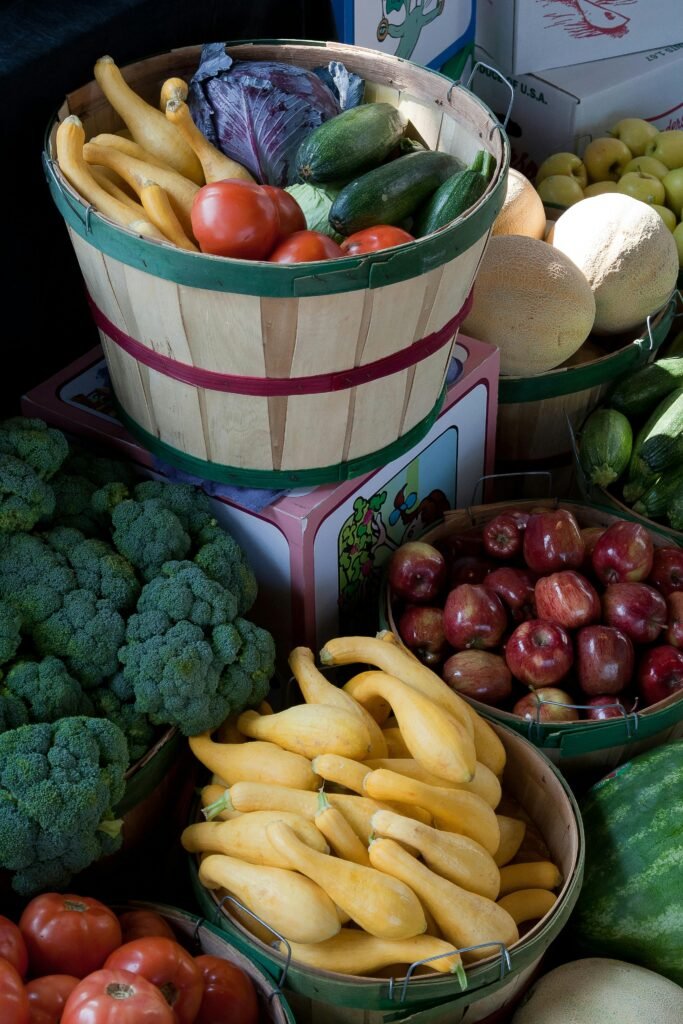Wood crates are a popular choice for packaging and shipping due to their durability and eco-friendliness. However, without proper protection, these crates can still be vulnerable to damage during transit. In this article, you will discover effective techniques for cleaning and safeguarding your wood crates, ensuring their longevity and maximizing their ability to protect the valuable contents within. From preventive measures to practical maintenance tips, this comprehensive guide will help you keep your wood crates in top-notch condition, ready to withstand any journey they embark on.
Preventing Moisture Damage
Sealing the wood
To prevent moisture from seeping into the wood, it is important to properly seal the crates before use. You can apply a wood sealer or varnish to the surface of the wood, sealing off any pores or cracks that could allow moisture to penetrate. This will create a protective barrier, minimizing the risk of moisture damage.
Applying a waterproof coating
In addition to sealing the wood, applying a waterproof coating to the surface can provide an extra layer of protection against moisture. There are various waterproof coatings available in the market, such as polyurethane or marine-grade sealants, that can be applied to the crates. These coatings not only prevent moisture absorption but also help to enhance the durability of the crates.
Using moisture-absorbing materials
To further protect wood crates from moisture damage, consider using moisture-absorbing materials inside the crates. Silica gel packs or desiccants can help reduce humidity levels within the crates, preventing the buildup of moisture. Placing these materials strategically in the crates can effectively absorb excess moisture and maintain a dry environment, safeguarding the wood against damage.
Avoiding Physical Impact
Padding the interior
When it comes to protecting wood crates from physical impact, adding padding to the interior is crucial. You can use materials like foam inserts or packing peanuts to provide cushioning and absorb shock during transportation or storage. This will help minimize the risk of any potential cracks or damage to the crates caused by rough handling or accidental impacts.
Using corner protectors
The corners of wooden crates are particularly vulnerable to damage. To protect them, it is advisable to use corner protectors. These protective covers can be made of rubber or plastic and are designed to absorb the impact, reducing the chances of the corners getting chipped or dented. By installing corner protectors, you ensure that the most vulnerable parts of the crate are shielded from physical harm.
Adding shock-absorbing materials
In addition to padding and corner protectors, incorporating shock-absorbing materials can provide an extra layer of protection. You can use materials like foam sheets or air-filled cushions to create a buffer between the crates and any external pressure. This helps to disperse the impact and minimize the risk of the wood cracking or splintering.

This image is property of images.pexels.com.
Protecting Against Insects and Pests
Treating the wood with insecticides
To protect wood crates from insect infestations, it is advisable to treat the wood with insecticides. These insecticides are specifically formulated to kill or repel pests like termites or wood-boring beetles. Before using the crates, thoroughly spray or apply the insecticide to the wood, paying close attention to the corners, joints, and any vulnerable areas. This proactive approach will help prevent you from encountering costly or irreversible damage caused by pests.
Using insect-repellent sachets
Another effective method of deterring insects and pests is to place insect-repellent sachets inside the crates. Sachets filled with natural deterrents like cedar chips, lavender, or neem can help to keep insects at bay. These aromatic substances act as a repellent and discourage pests from nesting or infesting the wood. By regularly replacing these sachets, you maintain a protective barrier against potential insect damage to the crates.
Regularly inspecting for signs of infestation
Vigilance is key in preventing and addressing insect or pest infestation. Regularly inspect the wooden crates for any signs of pest activity, such as small holes, frass (insect waste), or wood dust. If you notice any indications of infestation, promptly take action to eradicate the pests and prevent further damage. Timely intervention will help preserve the integrity of the crates and minimize the risk of spreading the infestation to other wooden items in your storage or transportation facilities.
Handling and Storing with Care
Using proper lifting techniques
When handling wood crates, it is important to use proper lifting techniques to avoid putting unnecessary strain on the crates and risking damage. Lift with your legs, not your back, and distribute the weight evenly. This will help prevent any potential breakage or misalignment of the crate joints, ensuring the crates remain intact and sturdy during transportation or storage.
Avoiding stacking crates too high
Stacking crates too high can increase the risk of instability and accidents. To prevent damage, avoid exceeding the recommended stacking height. Overstacking can lead to the collapse of the crates and potential harm to both the crates and the items they contain. By adhering to the recommended stacking limits, you maintain the structural integrity of the crates and minimize the risk of accidents.
Storing in a cool, dry environment
Wood is susceptible to changes in temperature and humidity, which can cause it to expand or contract, leading to possible damage. To protect wooden crates, store them in a cool, dry environment. Avoid areas prone to excessive humidity, such as basements or poorly ventilated spaces. By providing a stable environment, you help prevent warping, cracking, or mold growth on the wood, ensuring the longevity of your crates.

This image is property of images.pexels.com.
Applying Protective Wrapping
Using shrink wrap
To provide an additional layer of protection against external elements, consider using shrink wrap to wrap the wooden crates. Shrink wrap tightly adheres to the surface of the crates, creating a barrier against dust, moisture, and other potential contaminants. This wrapping technique not only safeguards the wood but also helps secure any loose components, such as lids or hinges, preventing them from getting lost during transportation.
Applying bubble wrap
Bubble wrap is a versatile and effective material for protecting wooden crates. Wrap the crates with bubble wrap, ensuring all exposed surfaces are covered. The air-filled bubbles act as cushions, absorbing shocks and impacts, protecting the crates from scratches or dents. Bubble wrap is readily available and easy to use, making it an ideal solution for safeguarding your wooden crates.
Securing with strapping tape
After applying protective wrapping, it is essential to secure it in place to prevent any shifting or unraveling during transit. Use strapping tape to secure the wrapping tightly around the crates. This strong adhesive tape ensures that the protective wrapping remains intact, providing a reliable barrier against potential damage. By properly securing the wrapping, you ensure that your wooden crates are well-protected throughout their journey.
Implementing Reinforcement Techniques
Adding plywood reinforcements
For particularly heavy or fragile items, reinforcing wooden crates with plywood can provide additional strength and stability. Attach plywood sheets to the interior surfaces of the crates, ensuring they are securely fastened. Plywood acts as a reinforcement, distributing the weight and minimizing the risk of the crates collapsing or breaking. This technique is especially useful for crates that need to withstand rigorous handling or long-distance transportation.
Using metal corner brackets
Metal corner brackets are excellent reinforcements for wooden crates, especially at the vulnerable corners. These brackets provide extra support to the joints, preventing them from splitting or becoming weak due to stress. Attach the corner brackets securely using screws or nails, ensuring they are tightly in place. By adding these metal reinforcements, you significantly enhance the structural integrity of the crates, reducing the possibility of damage.
Applying additional screws or nails
To further reinforce and strengthen wooden crates, consider applying additional screws or nails at strategic points. This helps to prevent any loose joints or components from shifting during transportation. Be cautious not to overdo it, as excess screws or nails may weaken the integrity of the wood. Properly placed screws or nails provide stability and help ensure that the crates remain secure and damage-free.

This image is property of images.pexels.com.
Using Customized Cushioning
Creating custom foam inserts
For irregularly shaped items or highly fragile objects, it is essential to create custom foam inserts. Measure and carve out foam inserts that fit snugly around the item, providing optimum cushioning. Foam inserts ensure that the item remains immobilized within the crates, reducing the risk of movement and potential damage during transportation. Customized cushioning provides a tailored solution for protecting delicate objects and ensuring their safe arrival.
Using air pillows or inflatable packaging
Air pillows or inflatable packaging are convenient and effective alternatives for cushioning wooden crates. These air-filled bags can be inflated to the desired level of firmness, providing excellent shock absorption and impact resistance. Place the air pillows strategically inside the crates to support and protect the stored items. The adaptable nature of these cushioning materials makes them ideal for accommodating various shapes and sizes.
Utilizing foam or rubber corner blocks
For added stability and protection, foam or rubber corner blocks can be utilized. These blocks are designed to fit snugly into the corners of the crates, providing cushioning and stability to prevent any potential damage caused by movement. Foam or rubber corner blocks help to distribute impact forces evenly, reducing the risk of cracks or breakage. By utilizing these corner blocks, you ensure that your wooden crates are well-prepared for transportation or storage.
Securing with Fasteners and Fixtures
Using strong metal hinges
To ensure that the wooden crates remain securely closed during transportation, it is necessary to use strong metal hinges. Metal hinges offer durability and stability to the crate doors, preventing them from accidentally opening or coming loose. Install the hinges securely with screws or nails, ensuring they are properly aligned. By using strong metal hinges, you provide an additional layer of security to protect the content of the crates.
Installing heavy-duty latches
In conjunction with metal hinges, installing heavy-duty latches further enhances the security of wooden crates. Heavy-duty latches firmly hold the crate doors in place, preventing any accidental openings or unauthorized access. These latches are designed to withstand external forces, ensuring the crates remain intact and closed throughout transportation or storage. By utilizing these secure fasteners, you minimize the risk of damage or loss of the crate’s contents.
Employing metal or plastic straps
For large or heavy wooden crates, employing metal or plastic straps can provide additional reinforcement and security. These straps can be tightened around the crates, holding the sides together firmly. Metal or plastic straps distribute the weight evenly and prevent the crates from shifting or opening during handling. By securing the crates with these sturdy straps, you add an extra layer of protection and peace of mind during transportation.
Regular Inspection and Maintenance
Checking for cracks or damage
Regularly inspecting wooden crates is essential for identifying any cracks, splits, or other signs of damage. Thoroughly examine the crates, paying close attention to the corners, joints, and surfaces. If any cracks or damage are detected, repair or reinforce the affected areas promptly to prevent further deterioration. By regularly checking for and addressing potential issues, you can prolong the lifespan of the crates and maintain their functionality.
Repairing any weak spots
In the event of discovering weak spots in wooden crates, it is crucial to repair them immediately. Reinforce any weakened joints or areas with additional screws, nails, or plywood. These repairs help restore the strength and stability of the crates, ensuring their continued usability. By addressing weak spots promptly, you prevent further damage or potential failures during transportation or storage.
Repainting or resealing as necessary
Over time, the protective coatings on wooden crates may wear off, leaving the wood vulnerable to damage. To maintain the integrity of the crates, consider repainting or resealing them as necessary. Sand down any rough surfaces, apply a new coat of paint or varnish, and allow it to properly dry. This will help rejuvenate the protective layer and enhance the aesthetic appeal of the crates. By regularly repainting or resealing, you safeguard the wood against moisture, insects, and physical wear and tear.
Proper Handling during Transportation
Using forklifts or pallet jacks
When moving wooden crates, it is advisable to use forklifts or pallet jacks to ensure safe and efficient handling. These equipment help distribute the weight evenly and minimize the potential for accidents or damages that can occur with manual lifting. Consult with professionals on the proper usage and weight limits of the machinery to avoid overloading or mishandling the crates. By utilizing appropriate equipment, you reduce the risk of injury and ensure the crates are handled with care.
Securing crates with tie-down straps
To prevent shifting or tipping during transportation, securely secure the wooden crates using tie-down straps. These straps can be fastened around the crates and attached to the transportation vehicle, ensuring they remain in place throughout the journey. Properly tension the straps to minimize any movement or vibrations that could potentially damage the crates or their contents. By adequately securing the crates, you guarantee their stability and prevent potential accidents.
Avoiding rough handling or dropping
One of the most effective ways to protect wooden crates during transportation is by avoiding rough handling or dropping. Train personnel involved in the transportation process to handle the crates with care and caution. Encourage them to use proper lifting techniques and to avoid dragging or mishandling the crates. By promoting a culture of careful handling, you significantly reduce the risk of damage and ensure the safe transportation of your wooden crates.
In conclusion, properly protecting wood crates from damage requires a combination of preventative measures, careful handling, and regular maintenance. By following the techniques outlined in this article, you can significantly reduce the risk of moisture damage, physical impact, insect infestation, and other potential threats. Remember to take the time to inspect and maintain your wooden crates regularly to ensure their longevity and functionality. By implementing these comprehensive protection strategies, you can safeguard your valuable items and ensure that your wooden crates serve their purpose effectively for years to come.
